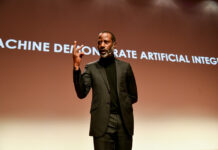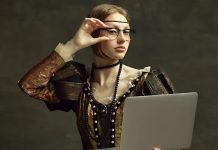By Dr. Monika Ewa Klein, Dr. Anna Maria Rostomyan and Dr. Ekaterina Safonova
This article delves into the intricate relationship between art, emerging digital technologies, including NFT’s, emotions, and fraud that is conquering new horizons, exploring existing vulnerabilities, inventing new attack types, and creating new challenges not only to artists, but art dealers, collectors, and investors. We drill into the techniques and tactics that fraudsters use to exploit digital art platforms, the emotional reflection of fraud, and the crucial role of blockchain and fintech in spotting, preventing, and mitigating fraud in the emerging digital art landscape.
The discussion encompasses the impact of technological innovation on the authentication and provenance of artworks, addressing the complexities of verifying digital art in a decentralized and rapidly evolving digital environment, where the expression and experience of emotions may become uncontrollable. Furthermore, the article investigates the role of blockchain technology and other security measures in mitigating fraudulent activities within the dynamically developing art landscape. Also, the article dwells upon considers the experiences of humans viewing AI-generated art.
Art fraud is a complex and multifaceted issue that challenges the very notion of authenticity and trust within the art market. The cases highlighted above are just a glimpse into the vast web of deception that exists. The allure of high profits, coupled with the lack of regulation and oversight, creates an environment ripe for fraudulent activities.
The consequences of art fraud extend beyond financial loss. Artists’ legacies are tarnished, collectors’ investments are devalued, and public trust in the art market is eroded. It is crucial for institutions, collectors, and art enthusiasts to remain vigilant and take steps to authenticate and verify artworks. Increased transparency, due diligence, and ethical practices can help mitigate the risks associated with art fraud. But as we still have not solved the pre-digital –era challenges, new technologies starts to create new opportunities for scammers, and the art market is not immune to its influence. The rise of the digital market and the emergence of non-fungible tokens (NFTs), as well as the rise of generative AI technologies, have introduced a new set of challenges and opportunities. Digital art, once considered intangible, now holds significant value in the form of unique digital assets.
However, the digital art market is not without its own risks. The intangibility of digital assets opens the door to potential fraud and illegal activities. The concept of ownership and provenance becomes more complex in the digital realm. The emergence of the metaverse and virtual worlds further blurs the lines between physical and digital art, presenting both exciting possibilities and potential pitfalls (Lampert, 2024).
As the art market evolves, it is crucial to address the legal and ethical implications of digital art. Regulations and standards must be established to protect artists, collectors, and the integrity of the market. Collaboration between artists, technologists, and industry experts is vital to navigate this new frontier and ensure the continued growth and sustainability of the art market.
The challenges posed by art fraud should not overshadow the immense value and beauty that art brings to our lives. The work of talented artists deserves to be celebrated and protected. By fostering a culture of integrity, accountability, and respect, we can preserve the integrity of the art market and ensure that future generations can continue to appreciate and be inspired by the power of art, since, as AI technologies can create art within just a couple of seconds, real artists may feel endangered and demotivated, so we should promote real artists and their artworks to stimulate their creativity and boost their confidence in further creating art.
Art is a part of the wider concept of of the creative industries, which encompass a wide range of sectors, including television, visual arts, publishing, gaming, and music. Globally, these industries represent a substantial portion of the world GDP, accounting for approximately 3% percent. The United Kingdom, in particular, has witnessed rapid growth in this sector, making it one of the fastest-growing economic segments (UNESCO, 2021). However, along with this growth come inherent risks that need to be addressed.
Leon Goldman, the Director of Operations at KCS Group Europe, highlights the multifaceted nature of the risks in the creative industries. From art forgeries to the use of artificial intelligence (AI) in the music industry, organizations often fail to recognize the level of liability they hold if something goes wrong. It is imperative for businesses and individuals within the creative sector to conduct thorough due diligence to mitigate these risks effectively. (KCS Group Europe, 2023).
Besides, as for the publishing sector, recently more often publishers and journalists adhere take advantage of to AI tools more often, even such renowned publishing houses as the German Burda Media. So, for instance, since autumn 2020, BurdaForward (which includes such brands as Focus Online and Bunte.de) has been extensively using artificial intelligence in making its news content more constructive and exciting. This “Constructive Score” AI was developed in-house and measures whether and to what extent the content on the Focus Online news portal has been written with AI solutions in mind, explains the editor-in-chief Florian Festl, highlighting that this new metric is changing the day-to-day editorial work and making it easier to generate work. He reports on why a constructive AI approach is crucial for BurdaForward and how using AI technologies allows Burda to live and breathe its identity as a media and tech company (Hubert Burda Media, 2022).
Moreover, there are currently several AI tools in the publishing market that publish whole magazines and books, such as Publishing AI, which generates whole books, and the role of the human author becomes endangered. Whether or not, or to what extent, to rely on AI-generated texts remains on the part of up to the author and publisher. Nonetheless, though however fascinating especially in time management it might be, especially in terms of time management, we should be careful with the AI-generated content, since it might have limitations in information and cultural biases.
The Importance of Provenance Checks
One key aspect of due diligence within the creative industries is conducting provenance checks. These checks involve establishing the legal ownership of artifacts, considering potential theft or looting during conflicts, and assessing the proper excavation, export, import, and transportation of objects. Provenance checks have become increasingly complex due to the growth of internet sales and auctions.
From discussion with art experts, it appears that while high-end art dealers are accustomed to conducting these investigations, lower-range objects often receive less thorough or, indeed, entirely absent no checks. This lack of regulation and transparency in the marketplace has led to numerous instances of obscure provenances and even disagreements among art experts.
To ensure the authenticity and legality of acquired or loaned items, organizations and individuals should apply basic principles such as authentication, condition assessment, title and provenance verification, legal compliance, and valuation. It is essential to consider the level of recompense available if a work turns out to be a forgery.
Nonetheless, sometimes not only the author might be endangered because of an AI malpractice or fraudery, but also because the real author might be unknown, as in the movie “Big Eyes”, which was set in early 1960s in San Francisco, directed by Tim Burton, and is based on the fascinating (mostly) true life story of the artist Margaret Keane (played by Amy Adams), a single mom and painter of children with anime-proportioned eyes, and her swindling husband Walter (Christoph Waltz), who fraudulently claimed credit for all of her works for over a decade. The film relies heavily on the dynamic between Margaret, who is very shy, timid, and submissive, unsure of herself and her talents; and Walter Keane, a charming man whose artistry helped him make a pair couple of millions of dollars selling Margaret’s ultimately catchy pop-art depicting children with huge eyes (Malone, 2014). AltThough the story in the movie ended well, Margaret being recognized as the true author of the artworks after re–gaining confidence and filing for a divorce and a lawsuit against her husband, t. This example comes goes to prove that in real life, art can often be prone to fraud, especially in terms of authorship, too.
Streaming platforms bear a fundamental responsibility to prevent for preventing the unauthorized use of material that damages the artist. However, the rapid transmission of content and the evolving technology make it increasingly difficult to police copyright infringement effectively. Due diligence becomes a crucial tool in preventing personal losses and reputation damage to artists and organizations.
This science advancement brings with it (as with other AI-generated content) ethical issues, even resulting in mental impairment and psychological difficulties of the involved, since it may damage the performer or the audience. This reminds us of the movie “S1m0ne directed by Andrew Niccol and starring Al Pacino back in 2002hen a famous actress decides to quit a producer’s film, he gets so obsessed that, being unable to find a replacement, he digitally creates an infatuating actress named Simone in order to substitute for the missing star. Later, the audience loves the created character so much and is so much emotionally attached to her that it becomes a real challenge for the producer to get rid of the digital star.
This brings us to the assumption that, even back in the 2000s, the producers were well aware of the vast possibilities and the consequent danger of AI advancements to the extent of warning future generations of both its possibilities and threats. Although there is, however, another success story, that of the recent ABBA concerts, which first started out in 2022, called the ABBA Voyage. This is: a new type of concert experience, where the young avatars of the pop stars, namely Björn Ulvaeus, Agnetha Fältskog, Anni-Frid Lyngstad, and Benny Andersson, are accompanied by live musicians. Unlike earlier digital avatar performances (sometimes referred to as “hologram” concerts), ABBA Voyage plays out on 65-million-pixel LED screens. In the previous shows, the performers’ avatars were projected on to a band of translucent plastic. In both formats, an animated two-dimensional image on a screen gives the appearance of a lifelike, 3D performer, the prototype of which can truly be regarded in cinematography as being the stunning movie https://www.imdb.com/title/tt0258153/ back in 2002.
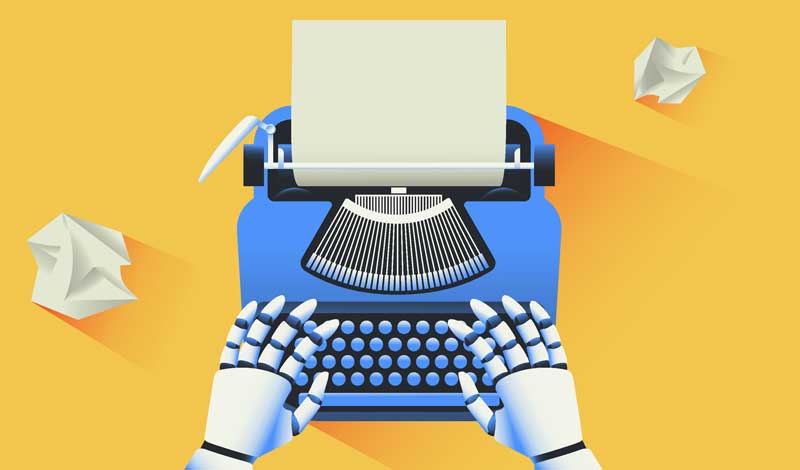
A Holistic Approach to Risk Mitigation
To navigate the risks inherent in the creative industries, a holistic approach to due diligence and risk mitigation is necessary. This approach should encompass multiple dimensions, including legal compliance, authentication, provenance verification, and fair compensation for artists and creators.
Furthermore, organizations should embrace transparency and ethical practices to foster a fair and sustainable creative ecosystem. The creative industries thrive on fresh ideas, innovation, and creative expression. However, these elements must be harnessed responsibly to ensure fairness, protect intellectual property rights, and safeguard the interests of all stakeholders involved.
Embracing the Digital Revolution
The digital revolution has transformed the creative industries, enabling new opportunities for artists and creators. The emergence of the metaverse, a digital universe where people interact and engage with virtual environments, presents exciting possibilities for the future, creating diversity, inclusion, and equity for everyone. However, it also raises new challenges, such as the valuation of digital art, the regulation of the digital market, and fraud, that emerge aggressively into developing digital landscape.
As the digital landscape continues to evolve, it is crucial to establish frameworks and standards that ensure fairness, transparency, accountability, security, and safety. This includes addressing issues of piracy, illegal markets, and the fair compensation of creators in the digital realm. It is also crucial to collaborate with the well-developed fintech sector, which has solid experience in fighting payment fraud, and can significantly safeguard the emerging digital art landscape. Advanced machine learning and AI fraud prevention / detection algorithms effectively monitoring transactions for suspicious activities, new identification and authentication methods, including behavioural biometrics, would be a great solution for NFT market places, reducing risky or fraudulent transactions and keeping digital criminals out of marketplaces (Safonova, 2019). Thus, by embracing innovation while maintaining ethical practices, the creative industries can truly thrive in the digital age, benefiting from its vast opportunities.
The Fashion Industry and Its Regulations
Fashion is also an art, a way of expressing oneself through clothing and accessories. Moreover, the consumers feel happiness and joy while acquiring their desired objects and also sometimes experience a feeling of emotional attachments to the brands. As we know, the fashion industry boasts with several renowned brands that have created a name for themselves. Nonetheless, they are also prone to fraud, and the market contains fake substitutes of for such renowned fashion houses as Armani, Dior, Hermès, Gucci, Louis Vuitton, etc. As Coco Chanel stated, “If you want to be original, be ready to be copied,”, but in this case, this is a real theft of intellectual property.
To regulate the market, some rules have been enforced by the brands to keep their brand name and their high standards, since if they want to be considered luxurious, they have to be exclusive. So, for instance, some of them such as LV have banned the use of fake artifacts by users and in the event that they are caught wearing fake LV items, both the seller and buyer of the fake objects will be charged. What’s more, not only are the authorities of those big companies cracking down on shipments of counterfeit goods, but they may also be checking up on you while traveling with those goods, even at the airport. Signs were posted throughout Paris airport that buying or carrying fakes is a crime and the that violators are to would be held to account, and subject to high fines and even imprisonment. However harsh this might sound, this is a real way of hindering the spread of fraudulent fashion art, and protects the rights of the brand and the real value of their intellectual property.
Another example of brands protecting themselves from fraud is the Hermès “Birkin” bag. The story of the creation and production of the bag dates back to 1984, when the British actress Jane Birkin was flying on a plane alongside Jean-Louis Dumas, who was back then the Executive Chairman of Hermès (1978-2006). Listening to the complaints of Birkin that she was unable to find a suitable bag as a young mother, she and the designer together sketched the famous iconic bag right on the plane. What is fascinating and interesting about this bag is that, although there are many counterfeits of it, the brand chooses those lucky and suitable heroines to wear a real Birkin bag, like Victoria Beckham or Melania Trump, which makes the possessor proud and emotionally delighted and thrilled. This act of itself hinders fraud.
Empowering Creators Through Education and Support
Another essential aspect of promoting fairness within the creative industries is empowering creators through education and support. Providing artists with the knowledge and tools to navigate the complex landscape of intellectual property rights, licensing, and contracts can help protect their work and ensure fair compensation.
Technology plays a dual role in the creative industries when it comes to fairness and risk mitigation. On the one hand, technological advancements have enabled the unauthorized use and distribution of creative works, leading to copyright infringement and loss of revenue for artists. On the other hand, technology can also be leveraged to protect intellectual property rights and facilitate fair compensation, since AI technology can also be used to detect art fraud by means of digitally appraising any artwork.
Blockchain technology, for example, offers the potential for secure and transparent transactions, ensuring proper attribution and fair remuneration for artists. Additionally, advancements in artificial intelligence can aid in the authentication of artworks and the detection of copyright infringement. Embracing these technological solutions can contribute to a more equitable and secure creative ecosystem.
Coding and Decoding Emotions through Art
Art is a fundamental part of the human evolution and is used by the creators to express and, through their art, convey their diverse palette of emotions and feelings at a given moment in life by means of emotionally depicting certain landscapes, portraits, and images. ThHence, the role of emotions is central in our dealings with artworks and is seemingly undeniable, since artists mostly create their masterpieces while under the influence of certain emotions, positive or negative. These common thoughts, however natural they may seem, become rather binary once we start to consider other common ideas about both emotion(s) and our relationship with artworks.
Indeed, artworks are created for us to enjoy art and to experience some or part of the emotions of their creator. Yet, when one of the parties, namely the humane creator of the artwork, is missing in real time in the process of experiencing and expressing emotions, especially in the case of AI, some hitherto such natural ideas about emotion become more complex and intangible. These include concepts relating to processing and imparting emotions, taking into account the generation of the coding and decoding, perceiving and analyzing, expressing and responding processes to the emotions of both the speaker and the listener, the writer and the reader, the painter and the viewer.
In both cases, real artwork and AI-generated art, the creator and the consumer are separated from one another in a time and space deixis, which makes the revelation of the emotions of the creator rather difficult. But, in the case of real artworks, there is always a tangible two-way human-to-human communication between the human artist and the viewer. On the other hand, in the case of AI-generated content, the creator is different from the human species, so the realms of the “understandings” and “viewpoints” are rather vague and strictly rational, and instructed through purely programmed logical information (so far). Besides, in order to experience an emotion towards X, one must believe that X exists (Radford, 1975), which might often be doubtful in the case of generative AI, which has the potential to create various illusive and delusional artworks.
Moreover, when we speak of AI-generated art, it subtly presupposes manipulation of genuine emotions, since in this case the artwork was not created by a real-world person, but instead by AI technologies, which are so far considered to be devoid of emotions, although this assumption might not hold true any longer, according to the synopsis of some experts and researchers. AI technologies, in turn, can have access to algorithms based on what colours generate intense emotions in the brain circuit of the observer. The technology can use these having in order to have the ultimate greatest chance of evoking strong emotions by activating the neurons responsible for generating emotions, and, thus, manipulate the audience. However, such algorithmic information on emotions and their experiences, can often be misleading and abusive. Nonetheless, since emotions are multifaceted and complex phenomena and we ourselves sometimes might not be fully aware of the intensity of our own emotions, it is unlikely that machines will “feel” emotions the same way we do in the real sense of the word, although they might have an understanding of feelings and reproduce and respond to them accordingly (Rostomyan, 2024).
Furthermore, in the case of a fraudulent artwork, the expression of genuine emotions on the part of the creator might be quite different from those of the real artwork creator themself. Hence, the objective of generating the same emotions in the consumers as those evoked by the real artwork might not be reached, since there will be a strong bias between the emotions of the real artist and the creator of a fraudulent work. Here, a deception is present at a deeper level, namely the emotional level, which can be described as abusive, too.
Besides, through By means of digital and AI-generated fraudulent art, the creators can attempt to achieve their the desired emotions in the viewers, since visual arts can elicit a broad range of intense positive and negative emotional experiences. Moreover, there is the potential of having to have an emotional impact on the viewer(s) in the way of prompting so as to prompt the latter them to act in a way that might be threat to the humanity. It follows that we have to be very careful with advances science not to harm ourselves, but to make them serve for the benefit of mankind, for example enlisting the help of AI to prevent the further spread of fraud.
AI Art and Its Impact Potential Impact
Artificial intelligence is becoming increasingly and undeniably significant in the art world. AI-generated artworks currently attract the attention of millions, and a large number of artists have started using AI algorithms to create artwork.
To reveal whether the art consumers react to digital art the same way as to real art, a team of researchers from the University of Vienna conducted experiments showing that people perceive and experience genuine emotions when viewing art (both AI-generated and real). Before viewing each artwork, the participants in the survey were told whether it was a real artwork or a digital one. The results showed that in both cases the participants experienced emotions, although in the cases of real artworks their emotions were more intense (Demmer et al., 2023).
This truly shows that AI-generated art also has great potential to generate genuine emotions in the audience. Moreover, we are pretty sure that they had not been told which one was real art and which one was AI-generated, the results of the emotions might have been strikingly close. Based on Dr. Anna Rostomyan’s research, rationality is tightly intertwined with emotionality (Rostomyan, 2013, 2022), so that if a rational appraisal determines that AI-generated artwork is not “real”, this will hinder the natural and genuine generation of emotions in the decoder of the information. Hence, if we do not identify artworks as being either real or AI-created, the appraisal and experience of emotions might be very close.
It is in this connection noteworthy that it has been revealed that, through the use of intense colour, artist gain the potential to have a strong emotional influence on the audience. Moreover, some colours, such as green, white, and blue, create the feeling of calmness. Using this knowledge, AI technologies, too, have the potential to create psyche –soothing artworks that have a positive influence on the viewer. And, in the opposite sense, knowing the potential of crimson and black (as in Stendhal‘s novel “The Red and the Black”) to create intense negative emotions such as sadness, gloominess, and despair, so the same combination may result in creating negative emotions in the viewer in artworks. The same effect can be achieved in creating positive emotions, for instance using the colours white, blue and / or green, as well as the description of scenes in literature, also has the potential to have an emotional impact on the reader.
The Metaverse: Its Vast Possibilities and Challenges
The metaverse is a rapidly evolving digital reality that offers endless possibilities for interaction and engagement. With the increasing popularity of non-fungible tokens (NFTs), the metaverse has become a hub for artists, collectors, and investors. However, as the metaverse expands, so do the risks of fraud and scams, introducing novel challenges in identification, authentication, legitimate trading, ownership, and the safeguarding of the digital art landscape. For these reasons, all the parties involved should be well –aware of the existing threats and navigate through the web with vigilance, adopting modern, effective fraud-prevention measures and keeping their knowledge up to date.
Fraud, with its dynamic, aggressive nature and appetite for innovation, explores every new landscape for vulnerabilities. The decentralized nature of the metaverse, blended with anonymity and transactions held in cryptocurrencies, creates a fruitful landscape for fraudsters to “cultivate” this digital space.
The metaverse is facing many challenges, including:
• Identification / authentication issues
• Social engineering attacks / phishing
• ATO attacks / identity theft
• Authenticity issues
• Marketplace manipulation
• Fake marketplaces
• Rug pull Scams
• Money laundering
• Data breaches
• Mental health issues
As for the last point, since in the metaverse there arises the issue of identification and authentication, as well as many different digital attacks, users can be trapped into many different fraudulent digital events, which can also have a negative impact on their mental health. To overcome this, it is highly advisable to be cautious in the metaverse as well.
To prevent fraud from happening, users, and; more importantly, digital art platforms must adopt robust fraud prevention strategies, learning from the best practices and experience of fintechs, which include:
✓ AI and ML for fraud prevention, detection, and mitigation
✓ Identity verification solutions
✓ MFA plus encryption
✓ Advantages of blockchain technology and smart contracts
✓ Anti-phishing threat detection AI-powered tools and users’ trainings
✓ Reporting suspicious activities by users
✓ Regtech support and legal oversight
✓ Education and awareness campaigns
✓ Cyber hygiene
Combining best technology practices in fraud prevention with user’ education, metaverse community awareness campaigns, and robust regulatory measures, will turn the metaverse into a great place for artists to innovate and create digital masterpieces, ensuring that together we safeguard this digital art ecosystem, attracting more investors and collectors and fewer fraudsters.
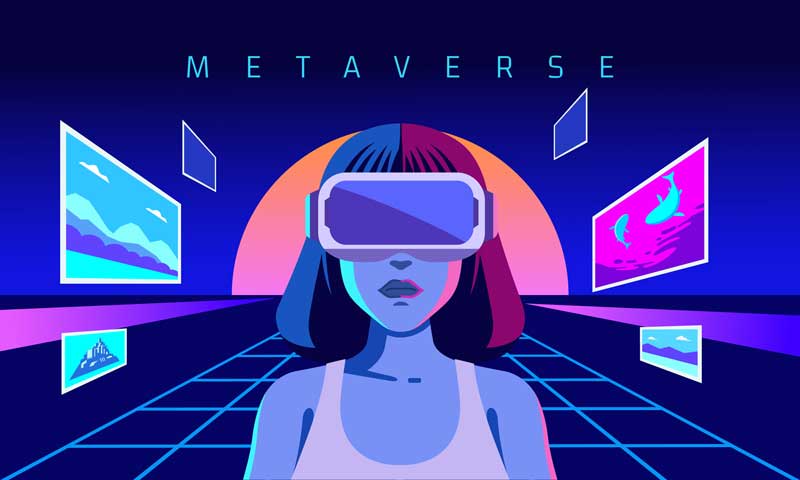
Conclusion
We are embracing an exciting era of digital revolution which has opened novel opportunities for society to grow, innovate, thrive, and elevate the cultural level to unprecedented heights. It has allowed artists from all across the world to showcase their creativity and talents to the global audience, making digital art incredibly popular due to its diversity, inclusion, and equality.
However, with the skyrocketing growth, this digital ecosystem has attracted highly sophisticated fraud. The unethical conduct of art fraud is often prosecuted by the law, although it should be noted that it is very difficult to detect and apply the law to AI art. With the expanding landscape and the vast possibilities of AI-generated content in many spheres of human activity like art, music, literature, cinema, fashion, etc., it has become a real challenge to detect fraud. In this respect, emotions should also be taken into account in real, digital, and AI art. By making sure that the content is not fraudulent, we can prevent emotional abuse and mitigate for the healthy two-way expression of emotions through valuable artworks. One way or another, AI –technologies advance are advancing rapidly and we have to be well –informed about the challenges and possibilities they bring with them. Through the application of regulations in the domain, we may efficiently leverage genuine artworks and mitigate for and stimulate a healthier and more efficient co-existence of human and AI endeavour.
Read the second part of the article here: https://www.europeanbusinessreview.com/artful-deception-exploring-the-interplay-of-art-fraud-and-emotions-2
This is Part 1 of a two-part article exploring the complex interplay between art, digital technologies like NFTs, and evolving fraud tactics. They examine the vulnerabilities impacting artists, dealers, and collectors, alongside the critical role of blockchain and fintech in detecting and mitigating fraud across digital art platforms.


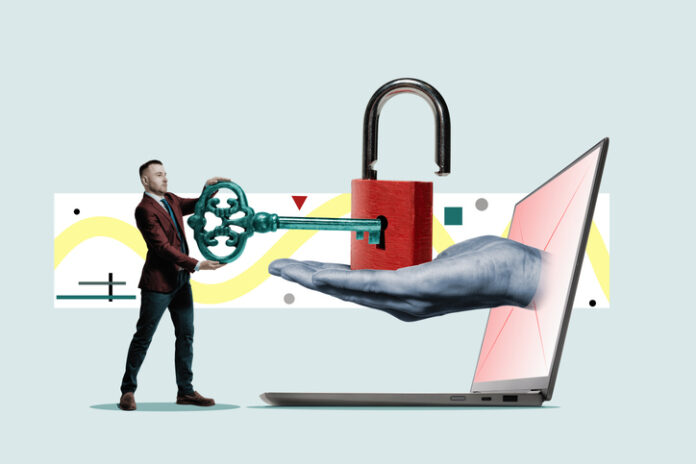

 Dr. Monika Klein
Dr. Monika Klein Dr. Anna Rostomyan
Dr. Anna Rostomyan Dr. Ekaterina Safonova
Dr. Ekaterina Safonova


